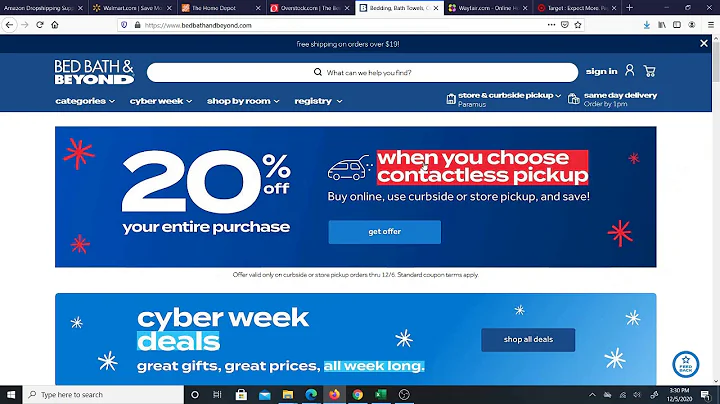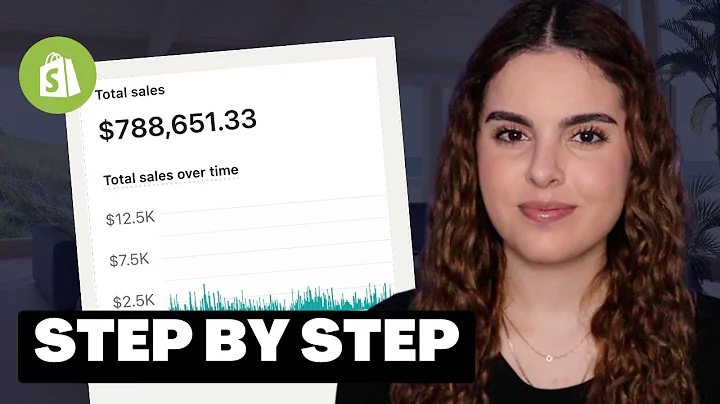The Ultimate Guide to Amazon Dropshipping: Start Your Profitable Business Now
Table of Contents:
- Introduction
- What is Amazon dropshipping?
- How to Start Amazon Dropshipping
3.1 Finding Products to Dropship
3.2 Researching Suppliers
3.3 Setting Up an Amazon Store
3.4 Listing and Selling Products
- Pros and Cons of Amazon Dropshipping
4.1 Pros
4.2 Cons
- Case Study: One Week Sales
- Tips and Tricks for Successful Dropshipping
6.1 Choosing Profitable Products
6.2 Optimizing Product Listings
6.3 Managing Inventory and Fulfillment
6.4 Customer Service and Feedback
- Introduction to Merch by Amazon
7.1 How It Works
7.2 Creating and Selling Designs
7.3 Tips for Success with Merch by Amazon
- Comparison: Dropshipping vs. Merch by Amazon
- Conclusion
- Frequently Asked Questions (FAQs)
The Ultimate Guide to Amazon Dropshipping: Start Your Own Profitable Business
Introduction:
Amazon has emerged as one of the largest online marketplaces, offering various business models for entrepreneurs to explore. This article aims to provide a comprehensive guide to Amazon dropshipping, a popular method of selling products without the need for inventory. Whether you're new to dropshipping or looking to expand your business, this guide will equip you with the knowledge and strategies to succeed in the competitive world of Amazon.
What is Amazon Dropshipping?
Amazon dropshipping is a business model in which sellers list and sell products on Amazon without actually having the physical inventory in their possession. Instead, sellers source products from suppliers and manufacturers and have them directly shipped to customers. This allows sellers to focus on the marketing, selling, and customer service aspects of the business, without the need for storage or fulfillment.
How to Start Amazon Dropshipping:
-
Finding Products to dropship:
- Conduct market research to identify profitable niches and trending products.
- Use tools like Walmart, eBay, AliExpress, and Alibaba to search for potential dropshipping products.
- Compare prices and availability from different suppliers to ensure competitiveness.
-
Researching Suppliers:
- Look for reliable and reputable suppliers who can provide quality products and timely shipping.
- Check supplier reviews, ratings, and communication responsiveness.
- Establish a good working relationship with the suppliers to ensure smooth operations.
-
Setting Up an Amazon Store:
- Create a seller account on Amazon and choose the appropriate selling plan.
- Optimize your store settings, including branding, product categories, and shipping options.
- Familiarize yourself with Amazon's policies and guidelines for dropshipping.
-
Listing and Selling Products:
- Create compelling product listings with informative and persuasive descriptions.
- Use high-quality images and optimize product titles with relevant keywords.
- Set competitive prices, considering profit margins and market demand.
Pros and Cons of Amazon Dropshipping:
Pros:
- Minimal upfront investment: Dropshipping eliminates the need for inventory and warehousing, reducing initial costs.
- Wide product selection: With dropshipping, sellers can offer a vast range of products without worrying about storage space.
- Scalability: Dropshipping allows for easy scaling of the business as there is no physical constraint on the number of products to sell.
Cons:
- Lower profit margins: Dropshipping can be highly competitive, leading to lower profit margins due to price wars.
- Limited control over product quality and shipping: As sellers rely on suppliers for product quality and timely shipping, issues may arise that are beyond their control.
- Higher dependence on suppliers: The success of a dropshipping business heavily depends on reliable and efficient suppliers.
Case Study: One Week Sales:
The author shares a personal case study, showcasing their one-year sales on Amazon. They highlight how consistent sales were achieved, with increased revenue during the Christmas season. The low PPC spend reflects the effectiveness of the strategies shared in their previous videos.
Tips and Tricks for Successful Dropshipping:
-
Choosing Profitable Products:
- Analyze market demand and competition.
- Consider product pricing, shipping costs, and potential profit margins.
-
Optimizing Product Listings:
- Craft compelling and unique product descriptions.
- Use high-quality images and relevant keywords.
- Encourage customer reviews and ratings.
-
Managing Inventory and Fulfillment:
- Stay updated with stock levels and supplier availability.
- Communicate effectively with suppliers to ensure timely fulfillment.
- Consider utilizing inventory management software.
-
Customer Service and Feedback:
- Provide excellent customer service to build trust and enhance the shopping experience.
- Promptly address customer inquiries, concerns, and issues.
- Encourage customers to leave feedback and reviews.
Introduction to Merch by Amazon:
Merch by Amazon is introduced as another profitable business model that does not require inventory. Sellers create and upload designs, which are then printed and fulfilled by Amazon when customers place orders. Through strategic design creation and ranking, sellers can earn commissions.
Comparison: Dropshipping vs. Merch by Amazon:
This section compares the two business models, highlighting their unique features, advantages, and drawbacks. Dropshipping's versatility and higher profit potential are contrasted with the simplicity and ease of use of Merch by Amazon.
Conclusion:
Amazon dropshipping provides a lucrative opportunity for entrepreneurs to start and grow their own profitable businesses, even without physical inventory. By following the strategies outlined in this guide, sellers can navigate the challenges, optimize their operations, and create a successful venture on the Amazon platform.
Frequently Asked Questions (FAQs):
Q: Is dropshipping on Amazon legal?
A: Yes, dropshipping is legal on Amazon as long as sellers adhere to the platform's policies and guidelines.
Q: How can I find reliable suppliers for dropshipping?
A: Research thoroughly, read supplier reviews, communicate with potential suppliers, and request samples to assess the quality of their products and service.
Q: What are the upfront costs associated with starting an Amazon dropshipping business?
A: The upfront costs mainly include creating a professional seller account on Amazon and investing in product research tools, marketing, and brand development.
Q: Can I sell any product through dropshipping?
A: While dropshipping allows selling a wide range of products, it is important to research market demand, competition, and profit margins before choosing the products to sell.
Q: How long does it take to build a successful dropshipping business on Amazon?
A: The timeline varies depending on various factors, including the effort invested, product selection, marketing strategies, and competition. Building a successful business may take several months to a year or more.
Q: Do I need any special skills or qualifications to start Amazon dropshipping?
A: No, you do not need any special skills or qualifications to start Amazon dropshipping. However, knowledge of online marketing, product research, and customer service can be beneficial.
Q: Can I use Amazon FBA for dropshipping?
A: Dropshipping and Amazon FBA are different business models. While FBA allows sellers to store inventory in Amazon's fulfillment centers, dropshippers rely on suppliers to fulfill orders directly to customers.
Q: Are there any risks or challenges associated with Amazon dropshipping?
A: Dropshipping on Amazon comes with risks such as inventory availability, shipping delays, and supplier reliability. Staying actively involved, managing customer expectations, and building a strong supplier network can help mitigate these challenges.
Q: Can I dropship products from anywhere in the world to sell on Amazon?
A: Yes, dropshipping allows sellers to source products from suppliers worldwide. However, it is crucial to consider shipping times, costs, and potential customs duties when selecting suppliers.
Q: Are there any legal requirements or obligations for Amazon dropshippers?
A: While legal requirements may vary based on location, dropshippers should comply with tax regulations and ensure accurate product information and customer communication. It is advisable to consult with a legal professional for specific guidance.



















